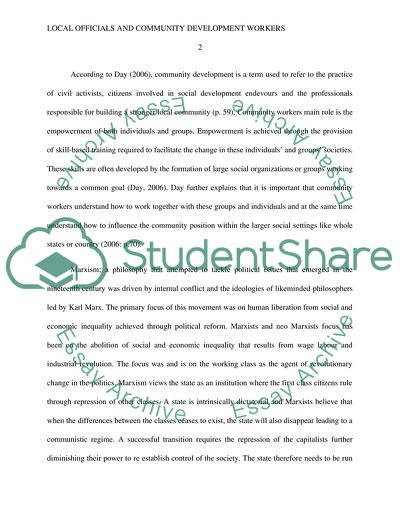Cite this document
(Evolving of Community Development Projects in the UK Research Paper, n.d.)
Evolving of Community Development Projects in the UK Research Paper. Retrieved from https://studentshare.org/social-science/1826492-analyse-how-theory-of-the-state-marxism-and-neo-marxism-has-impacted-on-the-roles-and-relationships-between-local-officials-and-community-development-workers
Evolving of Community Development Projects in the UK Research Paper. Retrieved from https://studentshare.org/social-science/1826492-analyse-how-theory-of-the-state-marxism-and-neo-marxism-has-impacted-on-the-roles-and-relationships-between-local-officials-and-community-development-workers
(Evolving of Community Development Projects in the UK Research Paper)
Evolving of Community Development Projects in the UK Research Paper. https://studentshare.org/social-science/1826492-analyse-how-theory-of-the-state-marxism-and-neo-marxism-has-impacted-on-the-roles-and-relationships-between-local-officials-and-community-development-workers.
Evolving of Community Development Projects in the UK Research Paper. https://studentshare.org/social-science/1826492-analyse-how-theory-of-the-state-marxism-and-neo-marxism-has-impacted-on-the-roles-and-relationships-between-local-officials-and-community-development-workers.
“Evolving of Community Development Projects in the UK Research Paper”, n.d. https://studentshare.org/social-science/1826492-analyse-how-theory-of-the-state-marxism-and-neo-marxism-has-impacted-on-the-roles-and-relationships-between-local-officials-and-community-development-workers.


